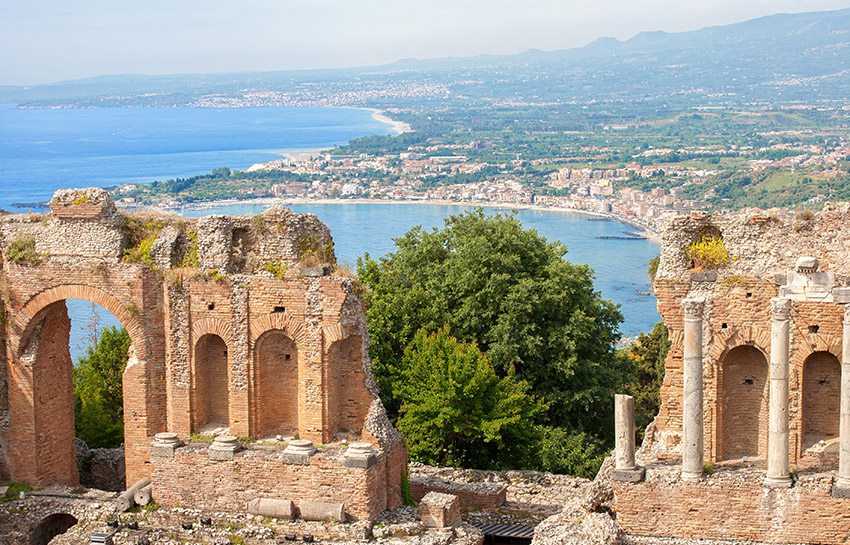
Sicily is the place for lovers of breath-taking scenery, rich culture and delicious food. Its prime location has historically made it the perfect hub for trade and commerce, resulting in an overabundance of ingredients from all over the world. Sicily’s influences can be traced back to not only mainland Italy but also from its former foreign rulers, creating a delicious array of dishes and recipes that have made their way to the island over the past centuries.
Among these irresistible delicacies are flaky, perfect pastries. Brought to Sicily during medieval times, pastry and the art of pastry making have had a significant grasp on one of the biggest parts of Italian culture: cuisine. While there are many different types, the first was made by combining flour, fat and water.
In the region’s earliest days, a scarcity of available sweet ingredients caused pastry making to become something limited to a small subset of the Sicilian population. In fact, most of the pioneer pastry makers were nuns. They made desserts to hand out to bishops, priests and other people they would regularly come into contact with. With the pastry shapes made to resemble religious symbols and references to the liturgical calendar, the nuns considered it the best gift they could provide.
Later it was discovered that it was possible to make sugar out of beets, and slowly, the production of pastries became more commonplace. Knowledge of different types of pastries became widespread amongst the rest of the region. This led to bakers creating new types of pastry. Most varieties included readily available baking goods with modified ratios prepared in different ways. While many of the recipes include similar ingredients, their unique alterations brought a different style of sweetness to every type of pastry.
1. Cassatelle
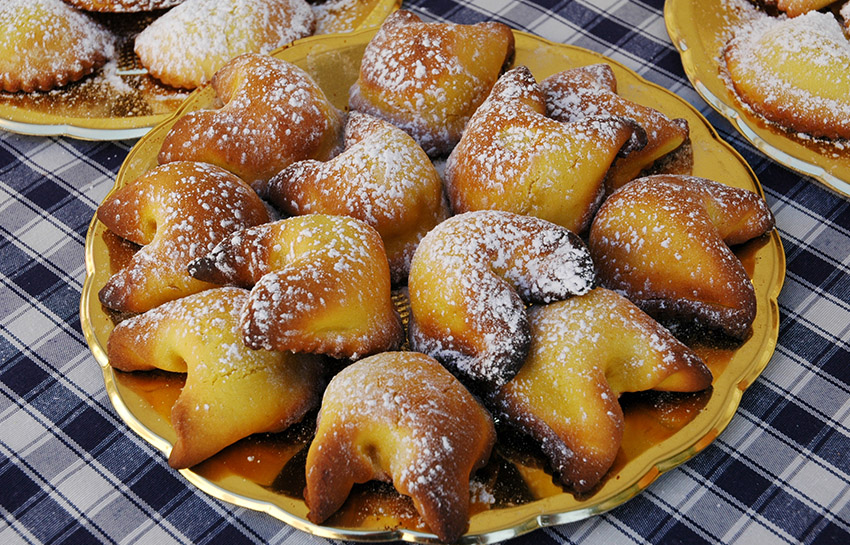
Typically consisting of chocolate and ricotta filling inside a thin pocket of dough, cassatelles are a popular treat of choice by many. The pockets are later enriched with white wine or Marsala. Considered the sweet version of ravioli, Cassatelles are made with similar ingredients, making them easy to replicate. They have become a regular dessert, breakfast and everyday snack. Varieties of the dessert pockets include pumpkins, chickpeas, and other ingredients already on-hand. Traditional cassatelles have a lemon-flavored filling, promising sweet and citrus flavors throughout your tasting experience.
2. Buccellato
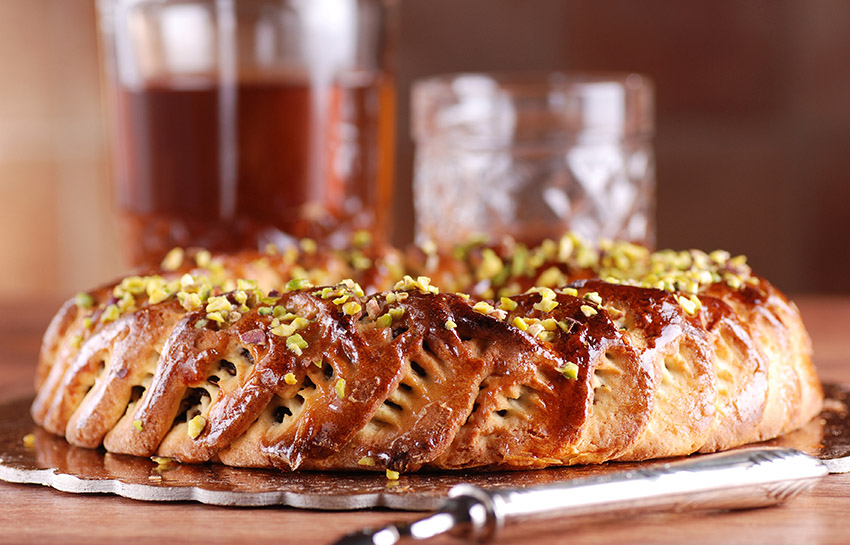
If you plan on taking holiday in Italy, odds are you will be feasting on Buccellato, a ring-shaped cake served as a breakfast or an after-dinner treat during major events and celebrations. The cake is prepared by sweetening shortbread pastry with honey and filling it with figs, dates, raisins, candied fruits and nuts. Its large size and circular shape make it perfect for sharing with loved ones.
3. Cassata Siciliana
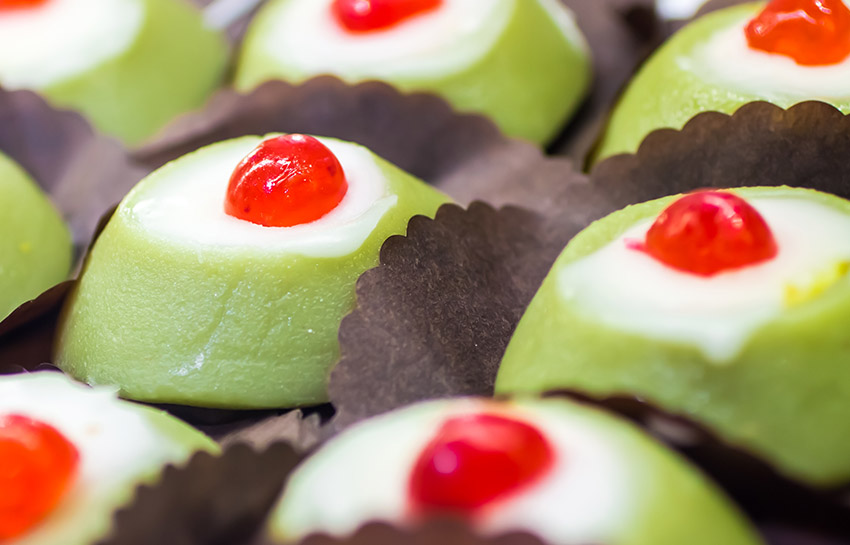
Contrary to the Buccellato, you’re not going to want to share your serving of cassata Siciliana. The single-serving cake is one of the most coveted desserts in all of Italy, with its origins dating back to when the land was under Arabic rule. Over time, the pastry has had slight adaptions in shape and color. Today the cassata Siciliana consists of a small round cake made with ricotta, candied fruit and marzipan. Its current shape and green coloring date back to 1870, during the time of the Florio family in Western Sicily. Salvatore Guli, one of the most prominent pastry chefs in the area at the time, was working for the family when he first created the modern cassata Siciliana we enjoy today. Once his fame grew, chefs began making the miniature cakes all around Sicily.
4. Martorana Fruit
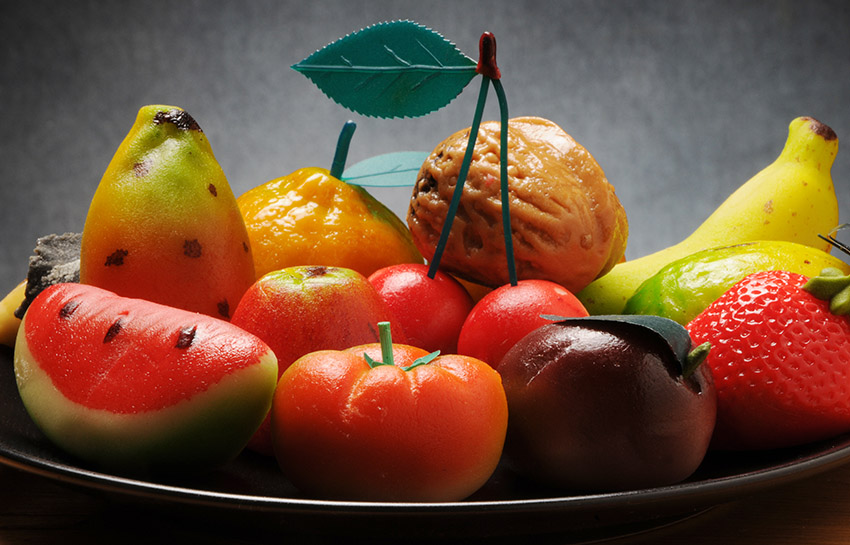
This pastry provides a journey for your eyes as well as your taste buds. Martorana fruit is a favorite among Sicilians for its unique look and sweet taste. It’s named after the Church of Santa Maria dell’ Ammiraglio, also known as La Martorana. Nuns from the church had hung the martorana fruit in trees to replace those that had been plucked. They did this during visits from important prelates to make their garden appear more welcoming and attractive. The “fruit” is made of almond-based marzipan that is later molded and colored. By using a paintbrush and diluted food coloring, the marzipan is made to look almost identical to fresh fruit.
5. Cannoli
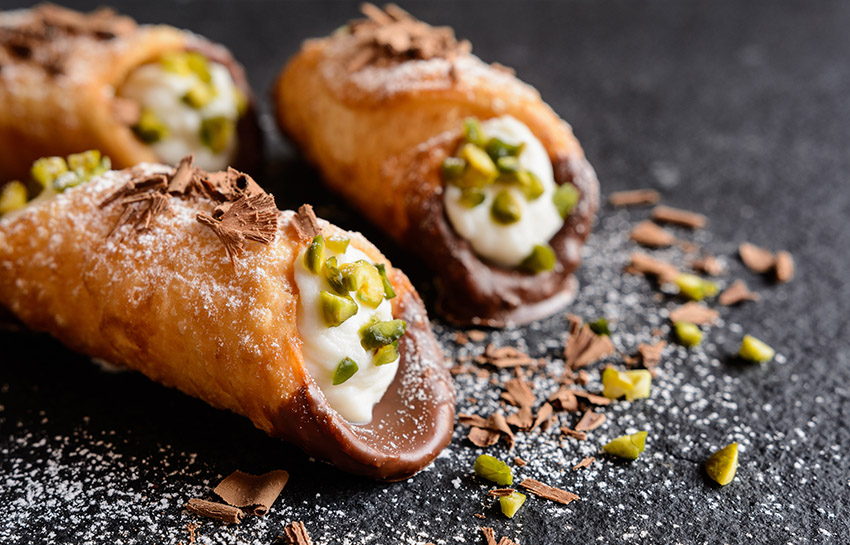
Possibly the most iconic dessert of Sicily, as well as the entirety of Italy, is the cannoli. First, thin tubes of pastry are fried, to later be filled with ricotta cream cheese. While many different toppings are used today, traditional cannoli are topped with candied fruit on either end. There are many theories of its origins. The most popular theory claims the pastry was first created in Palermo in the 9th century. Taking a bite of a cannoli will instantly bring you back to ancient Sicily, where cannoli were created especially for Carnevale, a celebration taking place before Lent. Throughout the festive season the cannoli became a sign of fertility and motherhood, although now they are enjoyed year-round as an everyday treat.
Many of the recipes that originated from the island have survived hundreds of years and are still well-loved today. Sicilian pastries and their attached traditions have since spread throughout the rest of the world, bringing the joy and art behind pastry making along with it. With the vast amount of pastry options in Sicily, there’s an option for every sweet tooth. Through foreign influence, the passing down of traditions and a region-wide love for food, Sicilian pastries have made a mark on Italy, along with the rest of the world, and will continue to do so for centuries to come.